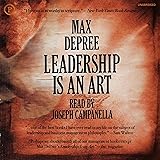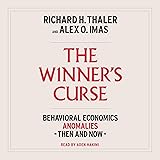The allure of gold as a timeless asset class in India is undeniable. For generations, gold has symbolized security, prosperity, and cultural heritage. However, the methods of acquiring and investing in this precious metal have evolved significantly. The video above succinctly contrasts traditional physical gold ownership with the modern convenience of digital gold.
While physical gold holds sentimental value, its practicality as an investment vehicle warrants closer examination. The hidden costs and logistical challenges associated with tangible assets often diminish their overall return profile. Conversely, digital gold presents a streamlined alternative. This form of investment leverages technology to overcome many traditional hurdles. It offers a transparent and efficient way to participate in the gold market.
Deconstructing Gold Investment: Physical vs. Digital Gold
Investing in gold requires a clear understanding of the various options available. Traditionally, physical gold in forms like jewelry, coins, or bars dominated the market. This approach involved direct ownership of the metal itself. However, this direct ownership often brings a host of associated costs. These expenses can significantly impact the investment’s net value.
For instance, consider the example mentioned in the video. Purchasing 25 grams of physical gold incurs a significant upfront cost. Beyond the base price of ₹1,58,000, there are substantial making charges. These charges, amounting to ₹11,982, represent about 7.5% of the gold’s value. Furthermore, a 3% Goods and Services Tax (GST) applies to the transaction. These additional levies mean an immediate loss of around 11% upon resale. This substantial depreciation highlights a key drawback of physical gold.
The Intricacies of Physical Gold Ownership
Physical gold, while tangible, comes with several operational complexities. Making charges are a primary concern for investors. These charges are applied during the fabrication of jewelry or custom coins. They reflect the craftsmanship and design involved. However, this value is often not fully recoverable during resale. This leads to a permanent erosion of capital for investment purposes.
Storage is another significant aspect. Holding substantial amounts of physical gold necessitates secure storage solutions. These may include bank lockers or insured home safes. Such solutions often incur recurring costs. These include rental fees or insurance premiums. The risk of theft or loss also remains a constant concern. Moreover, assessing the purity of physical gold can be challenging. Buyers face potential risks of acquiring impure or counterfeit items. This further complicates the investment process. Liquidity can also be an issue; selling physical gold might involve finding a reputable buyer and negotiating prices.
Embracing the Future: The Advantages of Digital Gold
The emergence of digital gold has revolutionized gold investment. It provides an accessible and efficient alternative. Digital gold represents actual physical gold holdings. These are stored securely in vaults on behalf of the investor. Transactions occur electronically through various platforms. This dematerialized format offers numerous benefits. It streamlines the investment process significantly.
A major advantage is the absence of making charges. As the video highlights, even though digital gold might appear slightly pricier initially (₹1,59,700 for 25 grams in the example), this initial premium is offset. Investors avoid the 7.5% making charge prevalent in physical gold. Additionally, there are no separate storage costs. The gold is held by professional custodians. This eliminates concerns about security and theft for individual investors.
Key Benefits of Investing in Digital Gold
Digital gold platforms ensure high purity standards. Typically, 24K 99.9% pure gold is offered. This eliminates the need for purity verification. It builds investor confidence. Purchases can be made in fractional amounts. This allows for investments as small as ₹1. This democratizes gold ownership. It makes it accessible to a broader range of investors.
Furthermore, digital gold offers enhanced liquidity. Investors can buy and sell gold instantly. This happens at prevailing market rates. Transactions are typically processed quickly. This allows for swift portfolio adjustments. The process is transparent, with clear pricing. This contrasts sharply with the often opaque pricing of physical gold. Digital gold acts as a hedge against inflation effectively. It provides a secure financial asset within an investment portfolio.
Beyond Digital Gold: Diversifying with Other Gold Assets
While digital gold offers compelling advantages, the investment landscape for precious metals is diverse. Investors seeking different risk-reward profiles can explore other gold-backed instruments. Understanding these alternatives helps in crafting a comprehensive investment strategy. Each option caters to specific investment goals. They also come with unique regulatory and tax implications.
Sovereign Gold Bonds (SGBs)
Sovereign Gold Bonds are government securities. They are denominated in grams of gold. SGBs offer a unique dual benefit. Investors receive an annual interest rate, typically 2.5% per annum. This is paid semi-annually. The principal amount is linked to the market price of gold. These bonds are issued by the Reserve Bank of India. They carry no risk of theft or storage issues. Upon maturity, capital gains are exempt from tax. This makes SGBs particularly attractive for long-term investors. However, they have a lock-in period, typically eight years.
Gold Exchange Traded Funds (ETFs)
Gold ETFs are open-ended mutual funds. They invest primarily in physical gold. These ETFs are traded on stock exchanges. They offer a convenient way to gain exposure to gold prices. Each unit of a Gold ETF represents a specific quantity of physical gold. Investors can buy and sell units throughout the trading day. This provides high liquidity. They offer transparency in pricing. Management fees are typically low. Gold ETFs merge the flexibility of equities with the stability of gold. They are excellent for investors who want to track gold prices without physical possession.
Gold Mutual Funds
Gold Mutual Funds primarily invest in Gold ETFs. Some also invest in companies involved in gold mining or refining. These funds offer professional management. They provide diversification within the gold sector. They are suitable for investors who prefer a hands-off approach. Investors do not need a demat account to invest directly. They can invest through Systematic Investment Plans (SIPs). This allows for disciplined investing. Gold mutual funds offer indirect exposure to the gold market.
Strategic Portfolio Allocation with Gold
Incorporating gold into an investment portfolio is a time-tested strategy for diversification. Gold typically performs well during periods of economic uncertainty. It acts as a reliable hedge against inflation. Therefore, it can stabilize overall portfolio returns. Its low correlation with other asset classes, like equities, is a key advantage. This helps reduce overall portfolio volatility.
The long-term return potential of gold is evident. The video highlights gold’s average 12% annual return over 20 years. This historical performance is compelling. A 25-gram gold investment could grow significantly. It could reach approximately ₹15 lakh over two decades. This illustrates gold’s wealth creation potential. It underlines its role as a strategic long-term asset. Investors should consider their risk tolerance. They should also align gold allocation with their financial goals. A balanced approach often includes a modest percentage of gold. This typically ranges from 5% to 15% of the total portfolio. This helps optimize returns while managing risk exposure.
Understanding the nuances of digital gold is crucial for modern investors. It offers a practical and secure alternative. Its cost efficiencies and ease of transaction make it superior for investment purposes. This holds true compared to traditional physical gold. Ultimately, informed choices lead to robust wealth management. Investors can then leverage gold’s enduring value more effectively.











